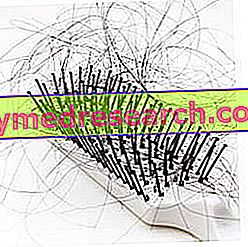Related articles: Partridge eye
Definition
The partridge eye is a tiloma, that is a superficial and circumscribed thickening of the skin, which develops on the toes. This area is particularly prone to mechanical insults, such as repeated compressions or persistent rubbing.
Unlike calluses, tilomas are well-defined hyperkeratosis (they are roundish skin thickenings and concentrated in a specific point), but they are deeper (they extend over most of the underlying dermis), and are often painful.
The onset of the partridge eye often indicates that something has changed in walking. In this sense, the disorder can be favored by changes in body weight (excessive or excessive weight loss) and inflammatory or arthritic phenomena affecting the bones and joints of the feet (eg hammer toe).
The partridge eye usually appears after wearing tight and inadequate shoes. The subjects most at risk are those who work standing up and practice intense sports activities.
Most common symptoms and signs *
- Foot pain
- Nodule
- tylosis
- blisters
Further indications
The partridge eye develops as an area of thickened and hard skin, mainly on the bony prominence between the fourth and fifth toe; in some cases, the pathology may also appear on the plantar surface.

See other Partridge Eye Photos
In these sites, the tiloma causes intense pain, as the hyperkeratosis compresses the dermis and its deepest part (the so-called horny taproot) can go to stress the nerve fibers present below (interdigital neuralgia).
The sensation perceived by the patient is comparable to that of having a pebble in the shoe or having a drawing pin stuck in the skin of the foot. Pain is accentuated in the evening or after a walk and can be evoked by exerting pressure with a finger on the tiloma. The partridge's eye causes difficulty in walking correctly and remaining upright for long periods. Sometimes, a bag or a pocket filled with liquid is formed at the lesion.
Diagnosis is based on the appearance of thickened and hard hyperkeratotic tissue.
The treatment consists of manual abrasion, whether or not associated with the use of keratolytics (eg salicylic acid in colloidal solution or 40% urea pack) to facilitate removal of the partridge eye. Rarely, surgical removal is necessary.
Wearing soft and comfortable shoes that do not alter the biomechanics of the foot can help prevent these injuries.



